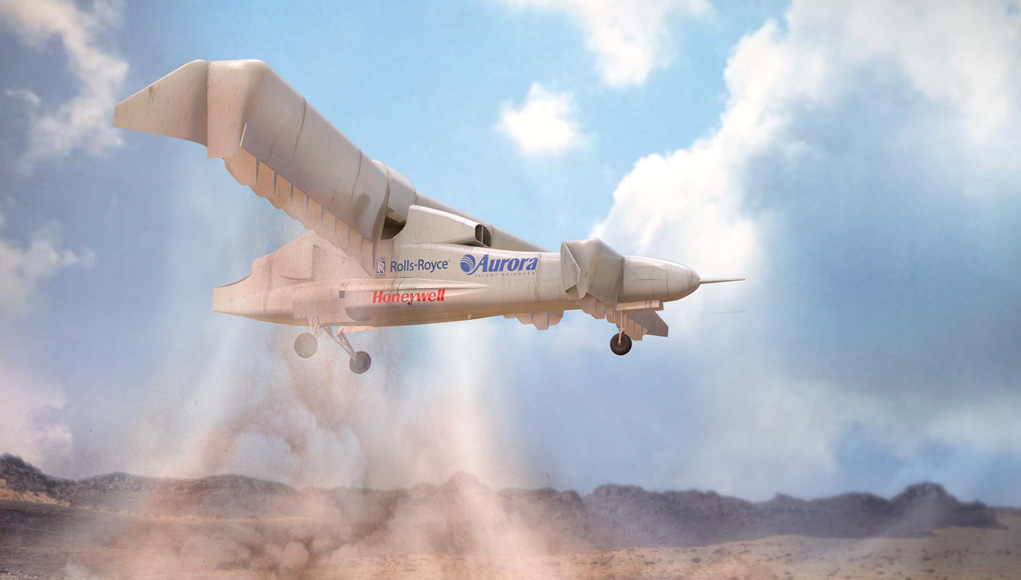A canard aircraft using 24 electrically driven rotors tucked inside its wings was selected by DARPA to demonstrate high speed and vertical takeoff and landing (VTOL) capabilities. The innovative multi-rotor design proposed by Aurora Flight Sciences was awarded a cost-plus-fixed-fee contract worth nearly US$90 million will cover the second and third phases of a research program into high speed vertical takeoff and landing (VTOL) aircraft. The program has the goal of performing flight tests in the 2018 timeframe.

“This VTOL X-plane won’t be in volume production in the next few years but is important for the future capabilities it could enable,” Bagai said. “Imagine electric aircraft that are more quiet, fuel-efficient and adaptable and are capable of runway-independent operations. We want to open up whole new design and mission spaces freed from prior constraints, and enable new VTOL aircraft systems and subsystems.” Bagai added that while the technology demonstrator would be unmanned, the technologies that VTOL X-Plane intends to develop could apply equally well to future manned aircraft.
Aurora’s Phase 2 ‘LightningStrike’ design for VTOL X-Plane (VXP) envisions an unmanned aircraft with two large rear wings and two smaller winglets (canards) mounted near the nose of the aircraft. The unmanned aircraft will use the Rolls-Royce AE 1107C turboshaft engine that would power three Honeywell generators, providing a generator delivering 3 megawatts (4,000 horsepower) of electrical power, driving 24 ducted fans.
The aircraft’s electric distributed propulsion (EDP) system would consist of highly integrated, distributed ducted fans that, combined with the synchronous electric drive system, would enable the design’s potentially revolutionary hover efficiency and high-speed forward flight. 18 of these electrically-driven propellers will be tucked in the main wings (nine ducts on each wing) and three inside each canard. Both the wings and the canards would rotate, to direct fan thrust as needed: rearward for forward flight, downward for hovering and at angles during transition between the two, also allowing the aircraft to rotate or reverse. Each rotor will be controlled separately, enabling the aircraft to maneuver and position itself in flight and hovering with maximum efficiency.
The DARPA technology demonstrator’s flight control system (FCS) builds on the heritage of Aurora’s Centaur and Orion optionally manned and unmanned aircraft platforms. The FCS system runs on a triplex-redundant design to ensure detection and correction of flight anomalies in both vertical and forward flight. The brushless electric motors are supplied by ThinGap the wing fans use 100 kW constant-speed motors and 70 kW for the canard fans. Thrust is controlled by varying blade pitch.
The new hybrid propulsion concept is expected to raise the aircraft hover efficiency from 60 percent to at least 75 percent; with cruise lift-to-drag ratio doubled from 5-6 to more than 10, the new design is expected to achieve top sustained flight speed of 300 – 400 kt. Efficiency will also translate to higher payload carrying capacity – the vehicle, projected to weigh 10,000-12,000 pounds (4,535 – 5,443 kg) will be able to haul nearly 3,000 pounds of useful payload (1.5 tons).
This was a 523 word excerpt of 726 words article. Please subscribe for the full edition.




















